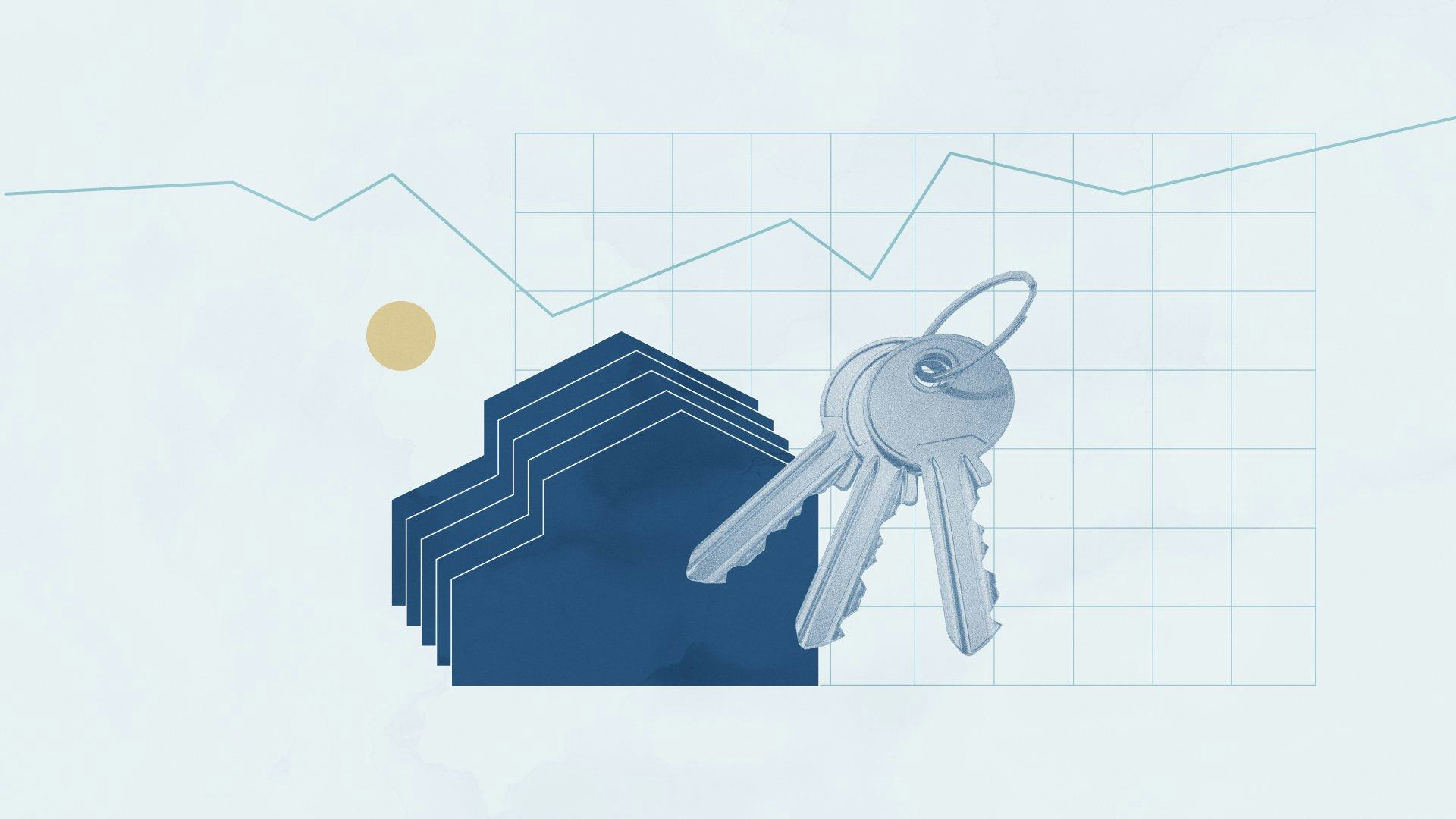How does the debt service ratio affect my mortgage application?

The concept “greiðslubyrðarhlutfall” was introduced by the Central Bank of Iceland (CBI) in November 2021. It was part of new rules capping the debt service on housing mortgage loans to a maximum percentage of wages.
Before I get into how the debt service ratio works, the applicable rules and their impact, I want to take a closer look at the word itself. The “greiðslur” part refers to instalments on loans, “byrði” to the amount of such payments and “hlutfall” to the percentage of wages that we need to dedicate to debt service. Similarly, in English “debt” refers to the instalments, “service” to the amount payable each month and “ratio” to the percentage of wages.
Instalments capped at 35-40% of take-home pay
So there we have it - the rules on the debt service ratio define how large a percentage of our take-home wages we can dedicate to instalments on our housing mortgage. In general, the percentage is set at 35% of take-home pay but at 40% for first-time buyers.
In our examples here, we’ll use a couple. They are applying for a loan together and their combined monthly take-home pay is ISK 1,200,000. This means that the CBI’s rules on the debt service ratio cap their monthly instalment on their housing mortgage at 35% of 1,200,000, or at ISK 420,000. If they are first-time buyers, the ceiling would be ISK 470,000, or no more than 40% of 1,200,000.
But it's not quite that simple ...
Calculation of the debt service ratio is complicated by the need to take certain conditions set by the CBI’s rules into account. We’re not really calculating the real instalments on a loan based on the terms offered at each time; rather, the instalments as they would be if they were based on the parameters set by the CBI’s rules. In short, the parameters are:
- For non-indexed loans, the rules allow a loan term of up to 40 years and the real interest rate on the loan, yet no lower than 5.5%.
- For inflation-indexed loans, the rules allow a loan term of up to 25 years and the real interest rate on the loan, yet no lower than 3%.
Now we know what the concept means and how the debt service ratio is calculated, but how does this impact us when we want to get a loan?
Impact of debt service ratio on credit assessment
The debt service ratio rule adds another condition that you need to meet to qualify as a borrower. In addition to the debt service ratio, you also need to prove your creditworthiness and apply for a credit assessment with your bank.
The credit assessment has been an integral part of housing mortgages for several years. Its purpose is to assess the borrower’s payment capacity, i.e. ascertain how much you can afford to spend on servicing your housing mortgage each month. The assessment takes into account take-home wages and subtracts regular expenses, including the estimated cost of living, housing cost and the debt service of any other liabilities you have in addition to the proposed housing mortgage. Landsbankinn currently requires a higher disposable income, meaning that you need to have more left once you’ve finished servicing your housing mortgage. Good creditworthiness is also required and, for more expensive properties, so is more equity. To qualify as a borrower, it’s not enough to simply pass the credit assessment.
This is how it works
I’ll set up an example to show how the debt service ratio rule impacts borrowing. I’m assuming a loan amount of ISK 55 million for the purchase of an ISK 70 million property. We’ll do two sets of calculations, one for a non-indexed loan and another for an inflation-indexed loan. Note that Landsbankinn only offers indexed loans to first-time buyers. We’ll assume the buyers have the same take-home pay as in the example above, or ISK 1,200,000.
- The debt service on a non-indexed loan is estimated at ISK 410,000. If we calculate the percentage of the real instalment using the income above, the calculations look like this:
410,000 / 1,200,000 = 34.2%
We get the same results if we calculate the percentage using the debt service ratio rules, as they are based on the same interest rates and same loan term. The debt service is the same, or ISK 410,000. The percentage is also the same, or 34.2%.
But why is it the same? Because calculation of the debt service ratio is based on the same loan term and interest rate as offered on the loan. - If we now take a look at an inflation-indexed loan and start by calculating the real instalments, our calculations are:
370,000 / 1,200,000 = 30.8%
But if we calculate the percentage using the CBI’s rules, we get a different result, or 328,000 / 1,200,000 = 27.3%.
Why is the percentage different this time? Because calculation of the debt service ratio allows a loan term of up to 25 years for indexed loans while the maximum loan term for such loans is 20 years at Landsbankinn. This lowers the ratio when we base our calculations on the CBI’s debt service ratio rules.
| Take-home pay ISK 1,200,00 | Non-indexed | Indexed |
|---|---|---|
| Debt service on loan | ISK 410,000 | ISK 370,000 |
| Debt service using debt service ratio | ISK 410,000 | ISK 328,000 |
| Percentage based on debt service | 34.2% | 30.8% |
| Percentage based on debt service ratio | 34.2% | 27.3% |
As the example shows, it’s fairly easy to qualify to borrow an inflation-indexed loan. This is due mainly to lower interest rates and lower debt service on indexed loans.
It should be noted that we always have to get through the credit assessment based on the real instalments on a loan. In addition, we need to meet the debt service ratio requirements and qualify to service debt as calculated by the CBI’s rules.
If my creditworthiness and credit assessment qualify me as a borrower but I don’t meet the CBI’s debt service ratio rule, will I not be able to get the loan?
That’s a very good and question and one we regularly get. It’s not impossible to get a housing mortgage if this is the case, because lenders are authorised to make exceptions from the debt service ratio rule. Our employees can evaluate such cases to determine the possibility of granting an exemption despite the debt service ratio exceeding 40% for first-time buyers and 35% for others. I mention first-time buyers specifically here because we try our best to apply the exemption to this group.
Should I apply for a credit assessment before I make a purchase offer?
We generally recommend that people complete a credit assessment before making an offer on a property, yes. With tighter lending conditions, it can certainly pay to know where you stand before you start looking for property to buy. You can apply for a credit assessment with Landsbankinn online and you can also book a consultation to discuss housing mortgage options. With a completed credit assessment and possible loan pledge for property in a certain price range, you are better equipped to start looking for the home of your dreams.
I hope that you’ve gained a better understanding of the CBI’s debt service ratio rules. But there’s no denying that this complicated. Our advisors are always ready to help if you have further questions about the credit assessment, housing mortgages or the debt service ratio.
We're always there for you.









